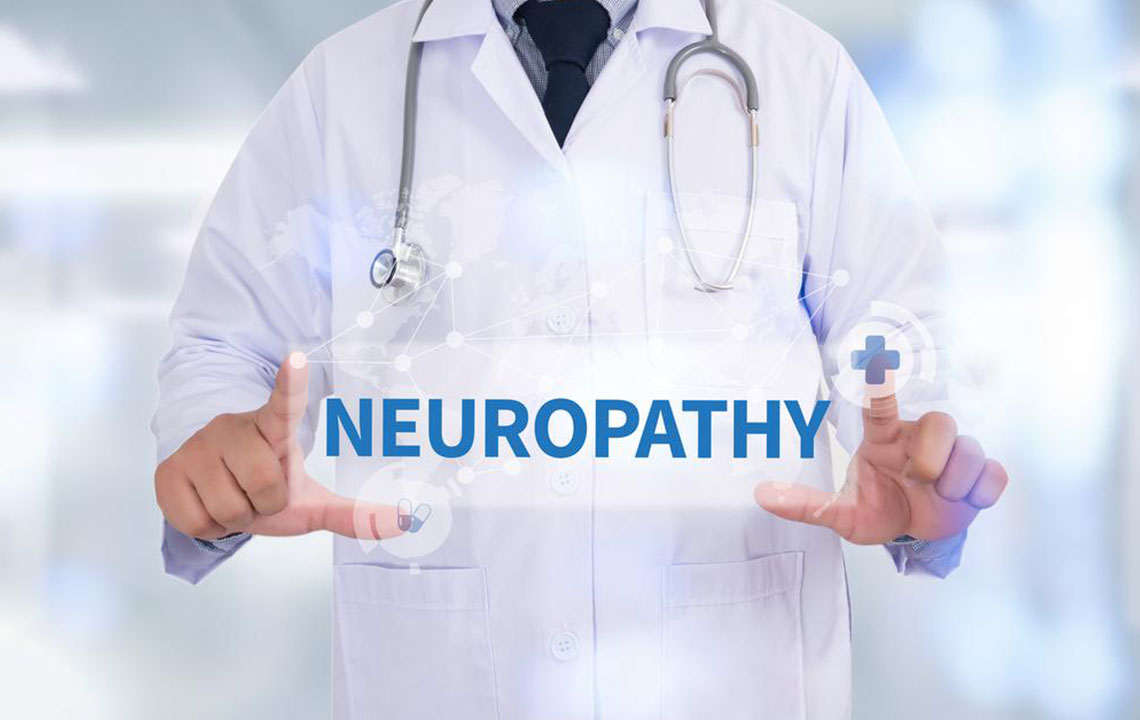Neuropathy Treatment and Management

Affecting 8% of the population who are over 55 years of age, neuropathy is not one single disease but a condition that results due to disruption or damage to peripheral nerves. Experienced as burning or shooting pain, it is often chronic. There are different neuropathy treatment options which depend on the type of symptoms, and the affect neuropathy has on three types of peripheral nerves.
The human nervous system comprises of central nervous system and peripheral nervous system. Peripheral nervous system is responsible for transmitting or transferring messages between the brain, spinal cord and rest of the body.
Peripheral nerves are responsible for regulating a large range of functions including voluntary muscle movement, automatic organ activity and the perception of stimuli. Pain or burning sensation is due to malfunctioning or damaged nervous system.
Causes of Neuropathic Pain
Either genetic or acquired later in life, neuropathic pain usually cannot be pointed towards a particular cause. However, some causes can be said to give birth to neuropathic pain. These include alcoholism, amputation, diabetes, facial nerve problems, kidney disorder, chemical imbalance caused due to liver problems, Toxins from exposure to heavy metals, thyroid problems, syphilis, shingles, multiple sclerosis, cancers and tumors, chronic inflammation, blood vessel damage and blood diseases, and other hormonal imbalances that affect metabolic processes.
Symptoms of Neuropathic Pain
There are a variety of symptoms that indicate damage or malfunctioning of peripheral nervous systems. Neuropathic pain symptoms include:
- Nausea and vomiting coupled with dizziness
- Tingling and numbness
- Abdominal bloating after meals
- Shooting and burning pain
- Difficulty in urinating or constant feeling that the bladder is not emptied properly.
- Constipation or diarrhea
- Erectile dysfunction (impotence) in men
- Decreased ability to sweat or heat intolerance
- Distorted vision
- Low blood sugar levels (hypoglycemia)
Diagnoses of Neuropathic Pain
There are physical exams conducted by doctors to diagnose the cause of pain, and accordingly, neuropathy treatment is suggested. Along with the test, the doctor also asks pertinent questions related to pain, when it occurs, and if there is anything specific, that triggers the pain. Doctors also advise getting both blood and nerve tests done to be able to understand the cause better.
Neuropathy Treatment Options
Anticonvulsant and antidepressant drugs form the first line of treatment for neuropathic pain. Doctors also recommend the use of non-steroidal anti-inflammatory drugs (NSAIDs) like Motrin or Aleve to help get rid of the pain.
In case of diabetes or other health disorders, it is important to consult a doctor before starting any medication on your own. It is only by proper management that the pain can be subsided. Also, by effectively managing the condition, further damage to the nervous system can be prevented.
Invasive or implantable device are used in cases that are challenging to treat. The device helps in managing the pain. Neuropathic pain can also be controlled with the help of electric stimulation.
However, it is important to note that neuropathic pain cannot be treated properly by following standard pain treatments and sometimes get worse over time. In some cases, it causes serious disability. Therefore, it is important to follow a multidisciplinary approach to get relief from neuropathic pain.
Neuropathy treatment aims to understand the underlying cause to prevent further damage and accordingly provides symptomatic pain relief therapies.
Medication helps in relieving pain and burning and reduces numbness and tingling sensation often experienced by people suffering from a nervous disorder.
Neuropathy Treatment with Drugs
Following medications help ease the pain caused due to a damaged nervous system:
- Epilepsy – Carbamazepine
- Antidepressants – Venlafaxine
- Opioid Painkillers – Tramadol or Oxycodone
- Chemotherapy-induced neuropathy – Duloxetine
- Skin Patches (Bandages) -Lidoderm (localized pain relief)
Remember, consult a doctor before starting any medications. The doctor performs an interview to understand health history and accordingly suggests medications to get relief from acute pain experienced due to neuropathic malfunctioning.
Other Neuropathy treatments include physical therapy, relaxation therapy, massage therapy, acupuncture.
Home Remedies for Neuropathy Treatment:
- Quitting smoking and alcohol
- Regular exercising plays a pivotal role in keeping the body healthy. It should be followed with a well-balanced diet
- Managing blood sugar levels
- Reducing exposure to toxins
- Applying warm or cold packs
- Avoiding putting prolonged pressure on certain nerves. This can be done by sitting in certain positions that don’t put too much pressure on the knees, back, etc.
- Massaging problematic areas to stimulate the nerves and improve circulation.
Neuropathy Management
Transcutaneous electrical nerve stimulation (TENS) machine also helps in relieving discomfort caused due to neuropathic disorders. This device helps in interrupting nerve messages by supplying a small amount of electric current. However, its effectiveness has still not been confirmed by researchers.
Non-drug Neuropathy Treatment
Wear fabrics that do not cause skin irritation, such as cotton
Keep the sensitive area covered with a cling film or a plastic wound dressing
Other alternative neuropathy treatment options include neuropathic pain include amino acids, fish oil supplements, and various herbs, such as geranium oil, curcumin, and evening primrose oil. These help in getting rid of the pain.


